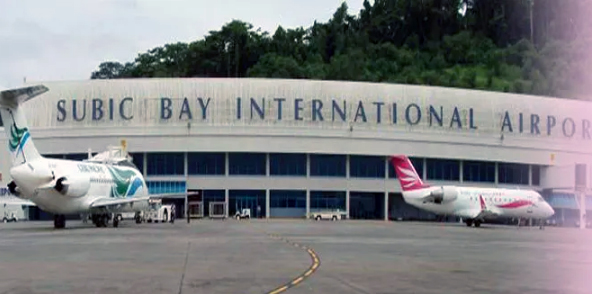- Continuous upgrades are being carried out at Subic Bay International Airport to develop its potentials as a gateway;
- The airport is eyed as an alternate hub to decongest NAIA; a logistics hub; and for aircraft maintenance, repair and overhaul operation;
- Subic Bay Metropolitan Authority is exploring public-private partnership development of Subic Bay International Airport.
Upgrades at Subic Bay International Airport (SBIA) are continuing, with the Subic Bay Metropolitan Authority (SBMA) envisioning the facility as an alternate gateway to the country’s main airports; a logistics hub; and an aircraft maintenance, repair, and overhaul (MRO) center.
SBMA seeks to redistribute excess traffic from congested airports in Luzon such as Ninoy Aquino International Airport (NAIA) to the underutilized SBIA, SBMA Airport Department manager and SBIA manager, Zharrex Santos said in a recent presentation at the SBMA 2022 Seaports Forecast webinar.
Santos noted there is overconcentration of passenger traffic, particularly at NAIA, which also translates to vehicular traffic along roads leading to the airport.
He said NAIA and Clark International Airport’s (CRK) combined annual passenger capacity of 35.2 million has already been breached, with the facilities handling 52.1 million passengers in 2019.
Santos said SBIA has a capacity of 6 million passengers a year, adding that 8 air traffic movements per hour can be transferred from NAIA to SBIA.
He said SBIA and SBMA will try to convince government offices and stakeholders to use SBIA, which he said can absorb and service excess traffic from NAIA and CRK.
While airport projects that can provide additional capacity are already in the pipeline, including Bulacan International Airport (BIA) and Sangley Point International Airport (SPIA), Santos noted the projects “will not come tomorrow.”
BIA is scheduled for completion in 2024 while negotiations for SPIA have yet to be completed.
Santos and SBIA may absorb excess passenger traffic from Central and Northern Luzon. He said about 12 million passengers being serviced at NAIA come from these two areas.
Since its inception, SBIA has only handled chartered flights. Santos said the facility is ready to accommodate commercial flights, noting that SBIA handled Philippine Airlines’ (PAL) 82 repatriation flights with more than 20,000 passengers from July 2021 to February 2022.
SBMA senior deputy administrator for operations Ronnie Yambao, during the same webinar, sad PAL sent a letter to SBMA chairman and administrator Rolen Paulino Sr. last March saying the airline will continue evaluating the possibility of serving Subic via regional or domestic flights in the future, “whether with charter services or eventual regular schedules.”
Other opportunities for SBIA include as a logistics and as aircraft MRO hub.
Santos said Subic is an ideal location for logistics operations. SBMA, he added, will tap courier and logistics service providers to locate their sorting facilities in the Freeport zone.
SBMA has also been marketing SBIA as an MRO hub for business aviation since 2019 following the opening of an MRO service facility at the airport.
Another niche market for SBIA is Visiting Forces Agreement (VFA)-related exercises. Currently, Subic is hosting U.S. troops participating in the joint military exercise with Filipino forces on the West Philippine Sea.
Santos said SBIA is being used as an entry and exit point for U.S. troops and the airport has already accommodated 52 flights and 2.349 incoming passengers.
In addition, SBMA is looking to capitalize on the cruise ship industry and Subic port’s proximity to SBIA by becoming the access airport for cruise ship and super yacht passengers.
The opening of a bike park at Subic and conducting a biking race in which SBIA can be the entry point for participants is also being explored.
Completed upgrades at SBIA include the installation of automated weather observation system, airfield ground lighting, and area navigation approach.
Ongoing are the installation of the new Doppler very high frequency omnidirectional range with distance measuring equipment, and a new air-ground communication equipment.
SBMA has allocated Php112.987 million for the procurement of aircraft rescue firefighting vehicles and Php103.125 million for new boarding bridges.
A budget of Php61 million is also allotted for procurement of new movement area guidance signs and various airfield lighting components and Php46 million for the new automatic dependent surveillance broadcast ground station.
Aside from upgrading projects, Santos said SBMA is looking into tapping private partners and is exploring the possibility of a public-private partnership development for SBIA.

Published with permission from the publisher of PortCalls,
Ms. Liza Almonte.
